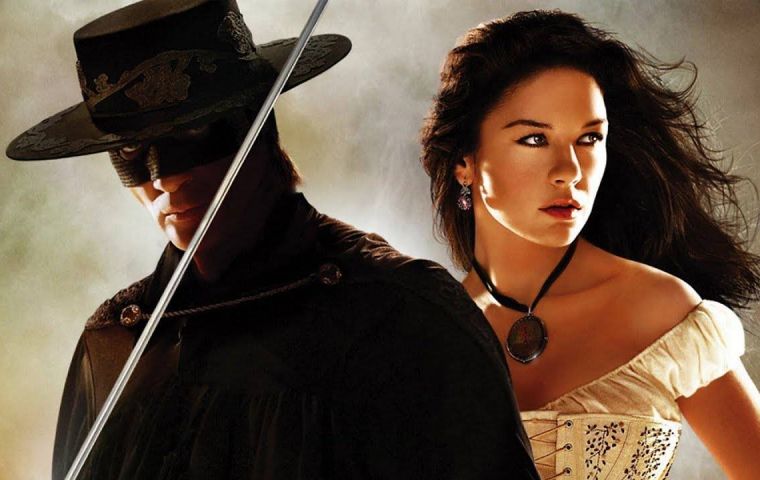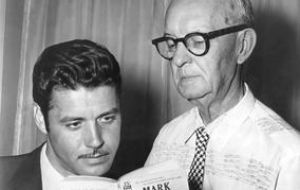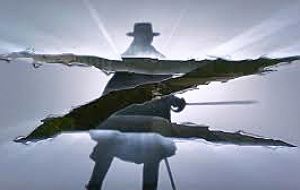MercoPress. South Atlantic News Agency
The myth of the Mexican caballero defender of the downtrodden turns 100
 “Zorro is the original caped crusader. Before Batman, before Superman, before Wonder Woman there was Zorro,” US history professor Stephen Andes said on his website
“Zorro is the original caped crusader. Before Batman, before Superman, before Wonder Woman there was Zorro,” US history professor Stephen Andes said on his website  The prolific McCulley went on to pen about 60 books about Zorro, which means “fox” in Spanish, but was reputed for his reluctance to say what inspired the character.
The prolific McCulley went on to pen about 60 books about Zorro, which means “fox” in Spanish, but was reputed for his reluctance to say what inspired the character.  He disguises himself in black with a cape, hat and mask covering the top of his face. He famously uses his sword to leave a “Z” on his defeated villains.
He disguises himself in black with a cape, hat and mask covering the top of his face. He famously uses his sword to leave a “Z” on his defeated villains. Aug 9, 1919, US writer Johnston McCulley released a story titled The Curse Of Capistrano in a Californian pulp magazine – in it was a masked and caped character named Zorro. In conceiving the sword-wielding defender of the downtrodden, McCulley set the stage for a whole century of superheroes.
“Zorro is the original caped crusader. Before Batman, before Superman, before Wonder Woman there was Zorro,“ American history professor Stephen Andes, who studies the history and myth of Zorro, said on his website.
The prolific McCulley went on to pen about 60 books about Zorro, which means “fox” in Spanish, but was reputed for his reluctance to say what inspired the character.
One theory is that he was modeled on real-life Mexican highway bandit, Joaquin Murieta, who took revenge for abuses of his countrymen in California during the 19th-century Gold Rush.
Another is that he was drawn from the Scarlet Pimpernel character – created by Hungarian-British writer Emma Orczy – who rescued aristocrats before they were sent to the guillotine during the French Revolution.
“Zorro was intended to express the spirit of the caballero of the times, and to everyone's satisfaction he did,” the US Oakland Tribune Magazine wrote in 1923 after interviewing the author.
The character is the alter-ego of a young 19th-century Spanish nobleman, Don Diego de la Vega, who returns to California from studies in Spain to find it being ruled by corrupt and cruel tyrants.
When he takes action in defense of the defenseless, he disguises himself in black with a cape, hat and mask covering the top of his face. He famously uses his sword to leave a “Z” on his defeated villains.
His secret identity is known only to his trusted servant Bernardo, who is mute, and to his intelligent black horse Tornado.
It was on the screen that Zorro became famous. A year after The Curse Of Capistrano “was published, it had been adapted for cinema as the silent film The Mark Of Zorro ”starring Douglas Fairbanks, then one of Hollywood's biggest stars.
More than 50 Zorro films followed, a handful made in Mexico and including spoofs and erotic versions. Two featuring Spanish actor Antonio Banderas and Catherine Zeta-Jones were Hollywood blockbusters: The Mask Of Zorro (1998) and its sequel The Legend Of Zorro (2005).
The Walt Disney television series, which ran for 78 episodes from 1957 to 1961, remains popular, still aired in France, for example.
Its musical title is legendary: “Out of the night, when the full moon is bright, comes the horseman known as Zorro. This bold renegade carves a 'Z' with his blade. A 'Z' that stands for Zorro.”
The character is played by the tall American Guy Williams, a fencer who did all the many sword duels himself with an unprotected blade.
Another Zorro television series was produced in the Philippines until 2009, with nearly 100 episodes, and a popular telenovela saw more than 110 episodes in Colombia.
In theatre, animation, comics books and video games, Zorro was credited by the creator of Batman, American Bob Kane, as a “major influence” on his own masked and cloaked character who debuted 20 years later.
In her 2005 book Zorro: The Novel, Chilean novelist Isabel Allende imagines the background of the Zorro character, depicting him as “a mixture of Robin Hood, Peter Pan and Che Guevara”.




Top Comments
Disclaimer & comment rulesCommenting for this story is now closed.
If you have a Facebook account, become a fan and comment on our Facebook Page!